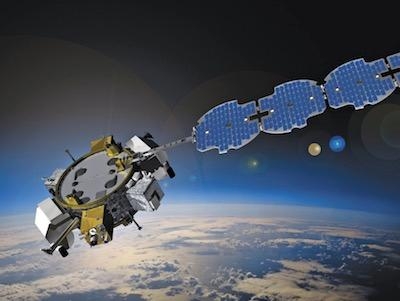Tue, Apr 17, 2018
EAGLE Launched Saturday From Cape Canaveral Air Force Station In Florida
Orbital ATK designed the EAGLE (ESPA Augmented Geostationary Laboratory Experiment) experimental satellite for the U.S. Air Force’s AFSPC-11 mission that successfully launched on United Launch Alliance’s Atlas V vehicle April 14 from Cape Canaveral Air Force Station, Florida. The AFSCPC-11 mission included a second company designed satellite, Mycroft, which is among several Department of Defense experiments hosted on the EAGLE platform as separate payloads.

The EAGLE and Mycroft satellites are based on the company’s ESPAStar™ and ESPASat™ products, which provide modular, cost-effective and highly capable infrastructure resources for hosting technology development and operational payloads. The Orbital ATK-designed EAGLE satellite is the first spacecraft based on the company’s innovative ESPAStar platform. The ESPAStar vehicle can accommodate any combination of up to six hosted or 12 separable, free-flyer payloads in low and geosynchronous orbit and is built to provide an even greater level of access to space. Orbital ATK designed and delivered the EAGLE satellite under a contract with the U.S. Air Force Research Laboratory (AFRL) Space Vehicles Directorate.
After a successful separation from the launch vehicle, EAGLE is hosting several Department of Defense payloads, including Mycroft, the second Orbital ATK-designed satellite to be deployed on the mission. Mycroft, a separable, fly-away experiment, utilized the company’s ESPASat platform for its flight. ESPASat is designed as an affordable GEO bus that can be launched as a secondary payload from an ESPAStar platform.
“Orbital ATK is proud to partner with the U.S. Air Force on the EAGLE and Mycroft missions,” said Chris Long, Vice President, National Security Systems at Orbital ATK. “Our unique capabilities to host separating and non-separating payloads represent a turning point in affordable access to space for small satellites and payloads.”
(Image provided with Orbital ATK news release)
More News
Aero Linx: Model Aeronautical Association of Australia MAAA clubs are about fun flying, camaraderie and community. For over 75 years, the MAAA has been Australia’s largest fl>[...]
Touchdown Zone Lighting Two rows of transverse light bars located symmetrically about the runway centerline normally at 100 foot intervals. The basic system extends 3,000 feet alon>[...]
“Discovery and innovation are central to our mission at Virgin Galactic. We’re excited to build on our successful record of facilitating scientific experiments in subor>[...]
How To Get A Story On Aero-TV News/Feature Programming How do I submit a story idea or lead to Aero-TV? If you would like to submit a story idea or lead, please contact Jim Campbel>[...]
Student Pilot Reported That During Rotation, “All Of A Sudden The Back Of The Plane Kicked To The Right..." Analysis: The student pilot reported that during rotation, “>[...]
 ANN's Daily Aero-Linx (05.02.24)
ANN's Daily Aero-Linx (05.02.24) ANN's Daily Aero-Term (05.02.24): Touchdown Zone Lighting
ANN's Daily Aero-Term (05.02.24): Touchdown Zone Lighting Aero-News: Quote of the Day (05.02.24)
Aero-News: Quote of the Day (05.02.24) ANN FAQ: Contributing To Aero-TV
ANN FAQ: Contributing To Aero-TV NTSB Final Report: Cirrus Design Corp SR20
NTSB Final Report: Cirrus Design Corp SR20



